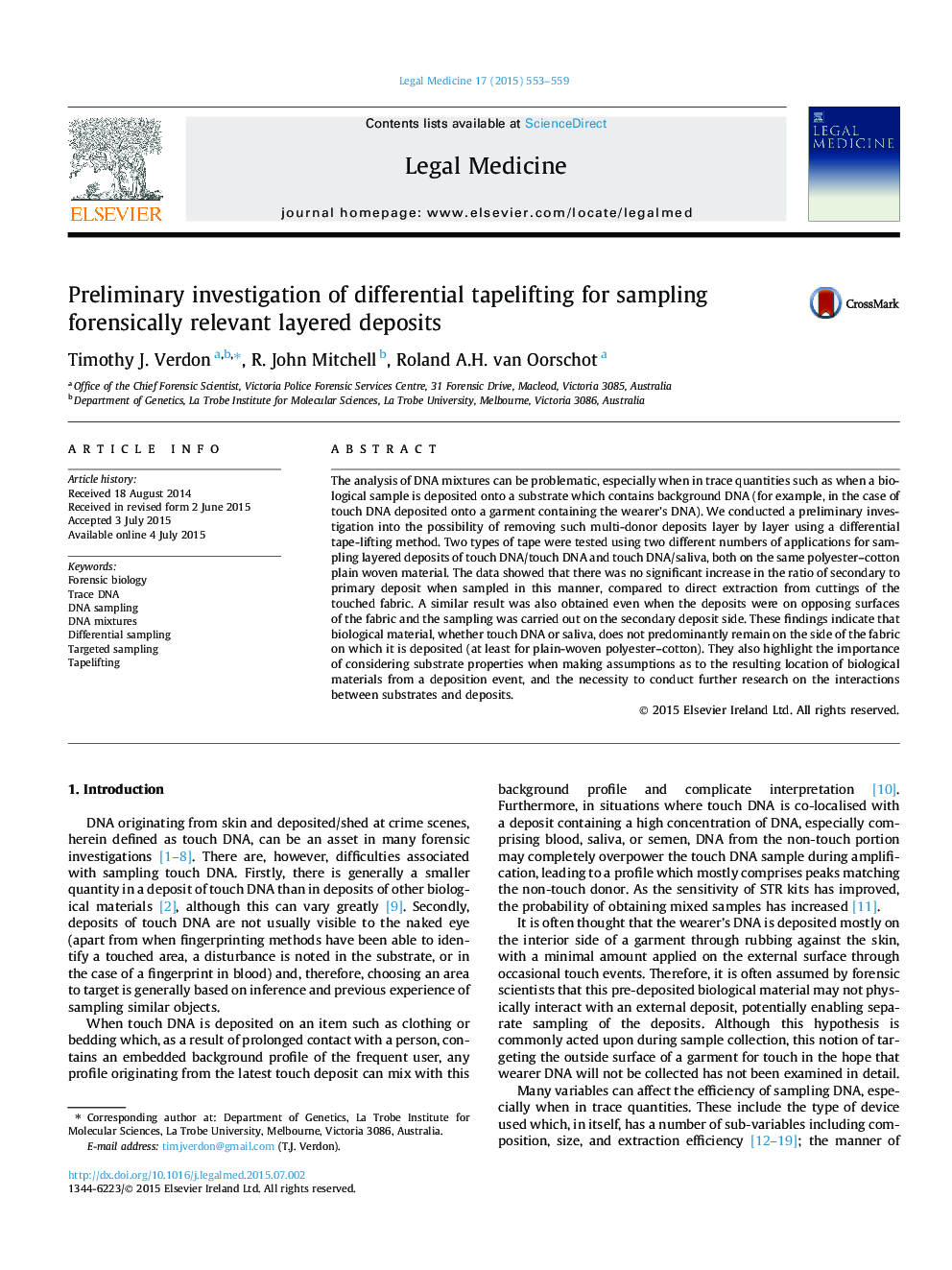| Article ID | Journal | Published Year | Pages | File Type |
|---|---|---|---|---|
| 103485 | Legal Medicine | 2015 | 7 Pages |
•Differential tapelifting does not enhance recovery of layered multi-donor deposits.•True for different tapelifting methods and combinations of deposit types.•An unexpectedly high amount of sample migrated through the substrate.•Findings are relevant to sampling strategies and profile interpretation.•More research is needed on substrate/sample interactions.
The analysis of DNA mixtures can be problematic, especially when in trace quantities such as when a biological sample is deposited onto a substrate which contains background DNA (for example, in the case of touch DNA deposited onto a garment containing the wearer’s DNA). We conducted a preliminary investigation into the possibility of removing such multi-donor deposits layer by layer using a differential tape-lifting method. Two types of tape were tested using two different numbers of applications for sampling layered deposits of touch DNA/touch DNA and touch DNA/saliva, both on the same polyester–cotton plain woven material. The data showed that there was no significant increase in the ratio of secondary to primary deposit when sampled in this manner, compared to direct extraction from cuttings of the touched fabric. A similar result was also obtained even when the deposits were on opposing surfaces of the fabric and the sampling was carried out on the secondary deposit side. These findings indicate that biological material, whether touch DNA or saliva, does not predominantly remain on the side of the fabric on which it is deposited (at least for plain-woven polyester–cotton). They also highlight the importance of considering substrate properties when making assumptions as to the resulting location of biological materials from a deposition event, and the necessity to conduct further research on the interactions between substrates and deposits.
